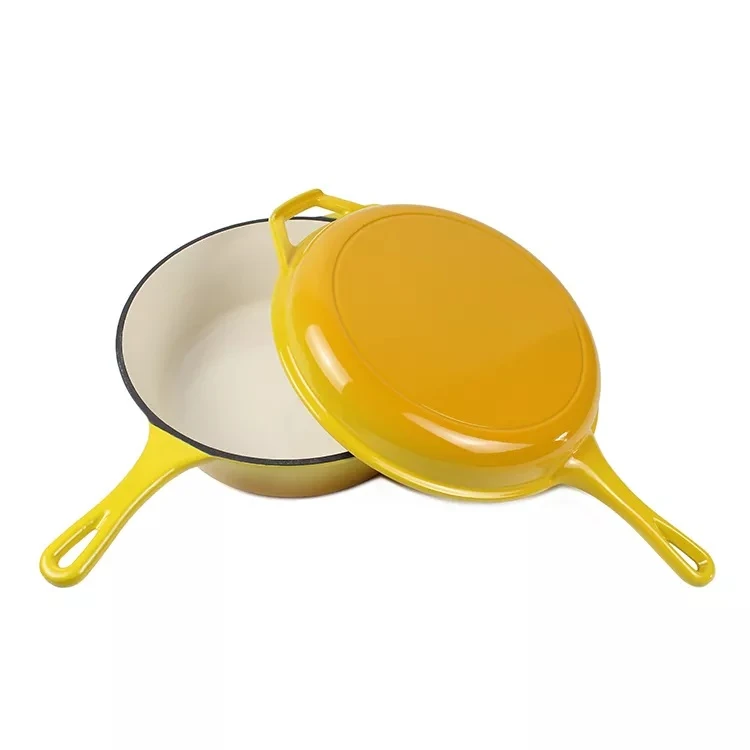burnt cast iron skillet
The Versatility and Benefits of a Burnt Cast Iron Skillet
When it comes to kitchen tools that can last a lifetime, few compare to a cast iron skillet. Known for its durability and exceptional heat retention, a cast iron skillet can be the backbone of any home cook’s culinary endeavors. But what happens when your beloved skillet gets burnt? While some might see a burnt skillet as a lost cause, others recognize the unique character and potential of these well-used cooking tools.
First and foremost, let’s discuss the origins of cast iron skillets. Made from molten iron poured into molds, cast iron skillets have been crafted for centuries. They are famous for their ability to evenly distribute heat, making them perfect for frying, baking, searing, and sautéing. With proper care, a cast iron skillet can become a family heirloom, passed down through generations.
However, like any cooking surface, cast iron skillets require maintenance. Over time, especially with frequent use, one may find that their skillet develops a patina that can vary in color and texture. This is often the result of accumulated oil and soot from cooking, which can impart a unique flavor profile to the dishes prepared within. Unfortunately, improper care or neglect can lead to a burnt skillet, often marked by a blackened, charred surface.
If you find yourself with a burnt cast iron skillet, don’t despair! First, it’s essential to assess the damage. Burnt food can stick stubbornly, but with the right techniques, even the most scorched skillet can be restored. Start by soaking the skillet in warm water to loosen any debris. For tougher grime, consider using a mixture of coarse salt and oil to scrub the burnt areas gently. The abrasiveness of the salt can help remove the burnt bits without damaging the skillet’s surface.
burnt cast iron skillet

Once the remnants of burnt food are gone, it’s time to re-season your skillet. Seasoning not only creates a natural non-stick surface but also prevents rusting. To do this, apply a thin layer of vegetable oil or flaxseed oil over the entire surface of the skillet. Place it upside down in an oven preheated to 375°F (190°C) and bake for an hour. This process allows the oil to polymerize, creating a protective layer that enhances the skillet's cooking capabilities.
A burnt cast iron skillet also offers a unique opportunity for culinary experimentation. The distinct flavor imparted from a well-used skillet can elevate your dishes. Think of the rich, smoky undertones in cornbread or the deep, savory notes in a homemade chili. Chefs often celebrate the imperfections of burnt pans, as they can add an extra layer of depth and authenticity to meals.
Moreover, using a skillet that has been around the block can serve as a conversation starter. It tells a story of meals cooked, memories shared, and culinary skills honed over the years. Some of the best recipes develop in well-loved cookware, where each scratch and burn mark symbolizes a lesson learned in the kitchen.
In conclusion, a burnt cast iron skillet should not be dismissed as a failure but embraced as a testament to the joy of cooking. With the right care and attention, it can be revitalized and continue to serve as a staple in your kitchen. So the next time you gaze upon your burnt skillet, remember that it holds the potential for many more delicious meals to come. With each use, you not only nourish your body but also cultivate the art of cooking, ensuring that the stories of your time in the kitchen continue to unfold.
-
Why Every Kitchen Needs a Casserole Cast Iron DishNewsJun.24,2025
-
Experience the Tradition and Quality of Cast Iron CookwareNewsJun.24,2025
-
Double Sided Cast Iron Grill PanNewsJun.24,2025
-
Cast Iron Dutch Ovens You’ll Actually UseNewsJun.24,2025
-
Buy Cast Iron Griddle for Everyday CookingNewsJun.24,2025
-
Barbecue Iron Grill Cooking PowerNewsJun.24,2025
-
Standard Product Lines from Cast Iron Cookware SuppliersNewsJun.11,2025
